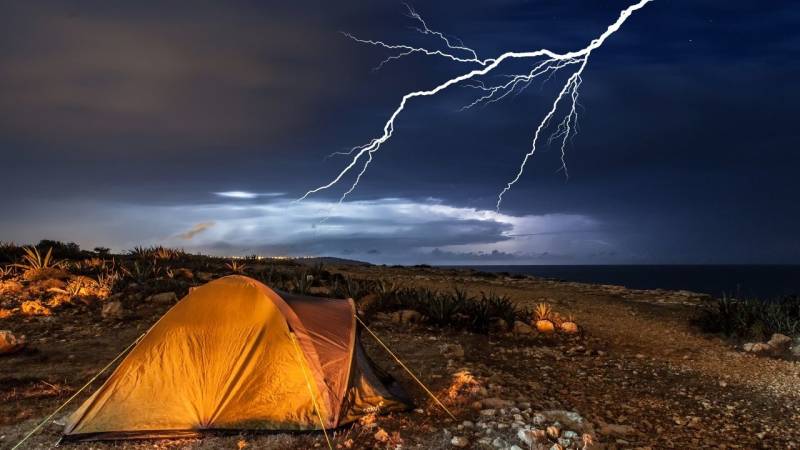
Is it dangerous to camp during a thunderstorm? How to behave safely?
👉 The key facts from this guide
- Thunderstorms while camping are dangerous as tents provide no protection.
- Seek shelter in buildings, vehicles, or the forest to minimize the risk of lightning strikes.
- Choose the right spot for your tent to reduce the dangers of storms, rain, and lightning.
- Securely anchor your tent to the ground and use an additional tarp to make it weatherproof.
- In a thunderstorm while in the tent, crouch in the middle, keep your feet together, and insulate yourself with a dry surface.
- Stay alert and ready to leave the dangerous situation at any time.
When camping, you don't always have the weather under control. Sure, you can check the weather forecast before your trip. But does it always tell the truth?
Being outside during a thunderstorm is dangerous - we all know that. But how should we behave if we are camping and a thunderstorm is approaching? Is it dangerous to camp during a thunderstorm?
Generally, it is not recommended to be outdoors in nature when a thunderstorm is approaching. A tent does not provide protection in this case. Make sure you can seek shelter in a building or in your car.
Read on to find out exactly how you should behave when a thunderstorm approaches, and you are trapped in your tent.
When is a thunderstorm actually dangerous?
A thunderstorm can be dangerous to you in various ways:
- Injuries caused by lightning
- Damages caused by lightning, such as short circuits and fires
- Storm damage caused by gusts or tornadoes
- Flooding caused by heavy rain
- Damages caused by hail
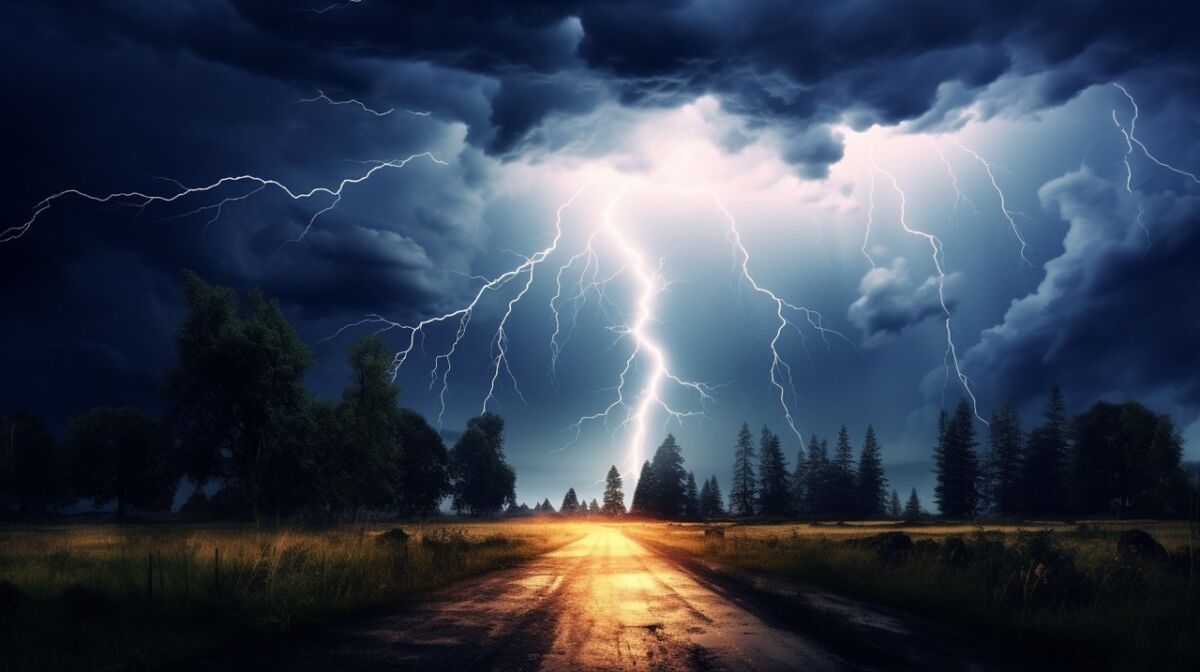
As children, we probably all learned to count the seconds from the sound of thunder to the arrival of the lightning strike. Most people were told that one second meant the storm was one kilometer away. But that is a myth.
In truth, the formula is as follows: 1 second = 340 meters distance to the thunderstorm.
Here's a very simple rule of thumb for you when you're on the go.
Distance in MILES = time in seconds between lightning and thunder / 5
Distance in KILOMETERS = time in seconds between lightning and thunder / 3
If the thunderstorm is closer than 10 km away from you, you should already seek safety and wait.
Under 6 seconds between lightning and thunder, which is about 2 km away, lightning can strike near you at any time.
A thunderstorm is mainly considered to be over when the last thunderclap has passed half an hour ago.
Did you know that it is also life-threatening to be in the forest during a thunderstorm?
If lightning strikes a tree, the water contained in it can abruptly vaporize due to the energy of the lightning. The tree then literally explodes (Source).
The right behavior in nature during bad weather
If you are still outdoors even though the thunderstorm is very close to you, there are some tips to consider. It is best to find a low point. A hollow is best for this.
If you crouch down and make yourself as small as possible, the risk of being struck by lightning is lower. However, you are still not completely safe outside, and you should be aware of that.
A certain level of protection also exists near high voltage power lines (but not near wooden poles). However, keep a distance of at least 3 to 4 meters from them. If you are not far from your car, the car is still the safest place. Get there as quickly as possible.
So don't give the lightning a chance to strike you. You should definitely close umbrellas.
Here are the key points again:
- Seek shelter in buildings or vehicles
- Avoid open terrain as well as hills, ridges, forest edges, and solitary trees
- Get out of water and swimming pools as quickly as possible
- Maintain at least three meters distance from neighboring tents and caravans
- Never walk between tents and caravans with metal guy wires
- Maintain at least one-meter distance from other people (three meters is better)
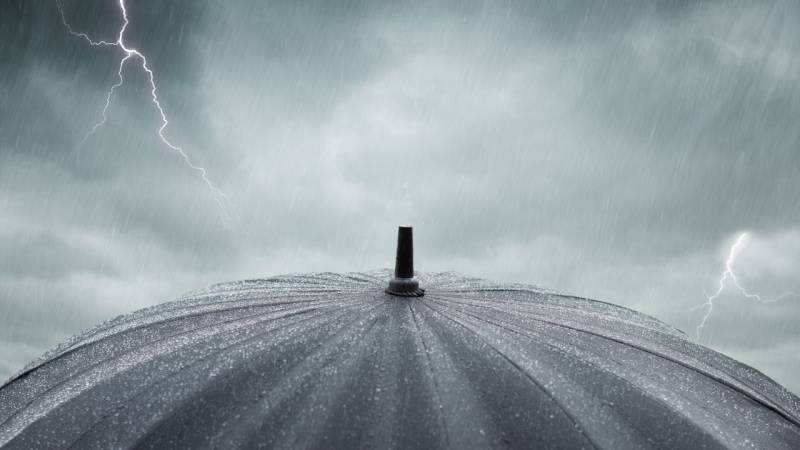
Camping and Thunderstorms - How dangerous is this combination?
You are still in the tent, surrounded by nature. A tent is usually made of polyester or nylon. So, it's not made of materials that specifically protect you from lightning strikes, like a solid house made of stones.
If you are on a campsite, it is best to sit in the car or seek shelter in a building during this time. On the other hand, choosing the right pitch can provide some more protection.
Even if you may feel safe with a tent over your head, you always have to be on alert.
Let's now take a detailed look at each individual situation.
The appropriate parking spot during a thunderstorm
Avoid pitches located at the highest point. This includes mountain peaks, ridges, or other slopes. However, on a campsite, the area is mostly flat anyway.

If you haven't set up your tent yet, it is not advisable in such a situation. Wait out the thunderstorm and seek shelter in a building or in your car.
If you have just arrived and want to ensure your safety in advance, do not pitch your tent near isolated trees. They pose a risk of lightning strikes.
But you shouldn't be the highest point with your tent either. You realize by doing so, it's a difficult decision.
In a forest, the risk of lightning strikes is actually the lowest.
Due to the presence of many trees in the forest, you are certainly not the highest point and therefore have a low risk.
Myth of Oaks and Beeches: However, the type of tree is not relevant. The saying "You should avoid oaks and seek beeches." is completely false (Source).
Beeches are just as often struck by lightning as oaks or other trees. The phenomenon that beeches apparently do not get struck by lightning is due to the smooth bark of the beech, which acts as a natural lightning rod when wet. The moist smooth trunk conducts the lightning away and the tree is not destroyed.
Furthermore, it should be noted that a thunderstorm is usually accompanied by rain, hail or strong winds. You should also consider this when camping, as the side effects can typically cause more damage than the actual thunderstorm itself.
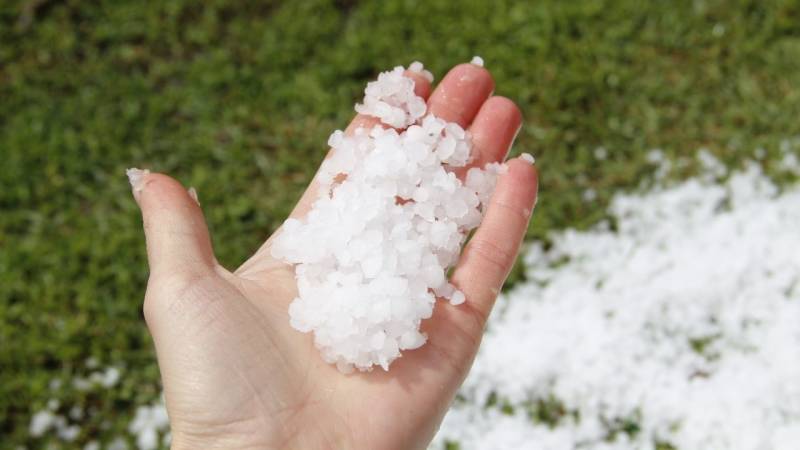
Do not continue to pitch your tent in flood zones. So, being too close to the river or choosing a hollow are not good sleeping spots.
If you are standing near trees, there is also the risk of branches breaking off and falling on you and your tent. So you see, deciding the campsite is not easy. Therefore, don't approach the decision too lightly.
Reading tip: How to find the ideal location for your camp
How to make your tent safe for bad weather
During a storm, it is important that your tent is secure. This means it should not be able to fly away. Especially strong winds can challenge you and your tent.
- Find a pitch that is relatively sheltered from the wind or pitch your tent in the lee of your car.
- Remember to properly anchor your tent to the ground.
- If your tent is not waterproof, be sure to use an additional tarp.
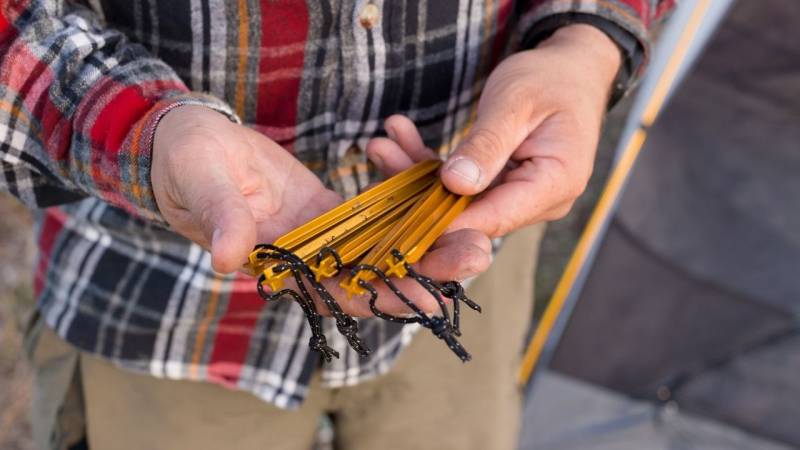
As you can see, a lightning strike is not the only enemy you should protect yourself from. In the great outdoors, you are exposed to all kinds of weather conditions. Knowing how to behave in certain situations is crucial.
Do you want to make packing for your next camping trip easier? Then download the free printable checklist for your camping equipment!
How to behave during bad weather and thunderstorms in a tent
If you find yourself in a tent during a storm and thunderstorm, it is important to stay calm. However, you also need to be prepared to seek shelter if necessary.
During a thunderstorm, it is also essential not to lie down in the tent. In the worst case, you risk the electricity flowing through your entire body. The following position will help you in this situation.
Squat down in the middle of the tent and keep your feet close together. Also insulate yourself by wearing shoes and squatting on a dry surface, such as a sleeping pad. Do not support yourself with your hands on the ground or against the tent wall. Also, keep a distance from your sleeping partners.
Moreover, remove all cables from the power grid, and please do not touch them.
Always be vigilant and ready to remove yourself from the dangerous situation at any time.
Read also my article "Dangers in the forest - 15 things you should pay attention to".
Have you ever experienced a thunderstorm in a tent? How was this experience for you?

Sources for the guide
https://www.vor-blitzen-schuetzen.eu/de
https://www.blitzrechner.de/gewitter/

Author of the guide
Martin Gebhardt
Hey, I'm Martin. On my blog, you will learn the basics and numerous details about living in the wild. I think survival, bushcraft and the good life in nature are the keys to happiness. Find me here on Instagram or on YouTube. You can find more about my mission on the About Me page.
Was this guide helpful?
49 people found this guide helpful.
4.92 out of 5 points (50 Ratings)
Comments (0)
This post may contain affiliate links. So if you click on the links and make a purchase, I will receive a small commission at no additional cost to you. Click here, to learn more about it.


